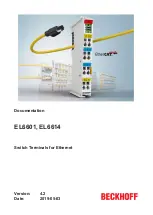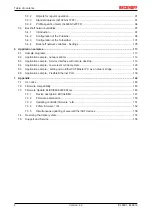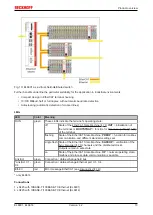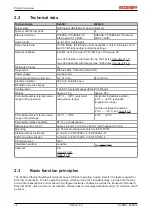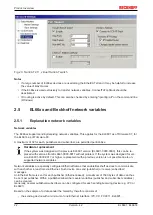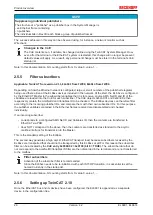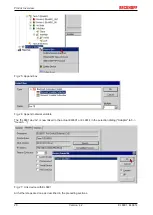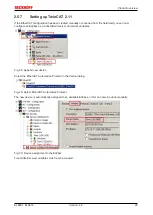
Product overview
EL6601, EL6614
14
Version: 4.2
2.2
Technical data
Technical data
EL6601
EL6614
Bus system
all Ethernet (IEEE 802.3) based protocols
Number of Ethernet ports
1
4
Ethernet interface
10BASE-T/100BASE-TX
Ethernet with 1 x RJ45
10BASE-T/100BASE-TX Ethernet
with 4 x RJ45
Cable length
up to 100 m twisted pair
Data transfer rate
10/100 Mbit/s, IEEE 802.3u Auto negotiation, half or full duplex at 10
and 100 Mbit/s possible, automatic settings
Network variables
EL6601 as of Firmware 07, EL6614 as of Firmware 03:
max 32 Publishers with total of max. 1024 bytes
max 32 Subscriber with total of max. 1024 bytes
Distributed Clocks
no
Diagnostics
Status-LEDs, CoE data about ADS
Power supply
via the E-bus
Current consumption via E-bus
typ. 310 mA
typ. 450 mA
Electrical isolation
500 V (E-Bus/Ethernet)
Bit width in process image
-
Configuration
TwinCAT System Manager/EtherCAT Master
Weight
approx. 75 g
approx. 85 g
Permissible ambient temperature
range during operation
-25°C ... +60°C (extended
temperature range)
Horizontal installation position:
-25°C ... +60°C (extended
temperature range)
all other installation positions:
-25°C ... + 45°C, see
Permissible ambient temperature
range during storage
-40°C ... +85°C
-40°C ... +85°C
Permissible relative humidity
95 %, no condensation
Dimensions (W x H x D)
approx. 26 mm x 100 mm x 52 mm (width aligned: 23 mm)
Mounting
on 35 mm mounting rail conforms to EN 60715
Vibration/shock resistance
conforms to EN 60068-2-6 / EN 60068-2-27
EMC immunity/emission
conforms to EN 61000-6-2 / EN 61000-6-4
Protection class
IP20
Installation position
variable
see
Approval
CE
2.3
Basic function principles
The EL66xx Ethernet Switchport terminals have 2 different operating modes, ideal for the tasks required for
Ethernet connectivity. The two operating modes, which can be active simultaneously, provide both the real-
time-critical transmission and reception of configured network variables as well as the transport of standard
Ethernet traffic, which, while it is not real-time-critical, does involve large data flows using, for instance, the IP
protocol:

